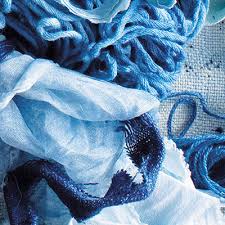Exploring the Global Market for Plant-Based Indigo Dye Exporters and Their Sustainable Practices
The Rise of Plant Indigo Dye Exporters A Sustainable Color Trend
In recent years, there has been a noticeable resurgence of interest in natural dyes, particularly indigo, driven by a global shift towards sustainable and eco-friendly products. Indigo dye, derived from the leaves of the indigo plant (Indigofera), has a rich history that dates back thousands of years, with its uses traced across various cultures and regions, from ancient Egypt to India's traditional textile industry. As consumers become more conscious of environmental impacts, plant indigo dye exporters are stepping into the limelight, blending tradition with modern ethical practices.
The process of extracting indigo dye from the plant is an art that involves fermentation, a method respected by artisans and textile producers. The leaves of the indigo plant are harvested, soaked in water, and allowed to ferment, producing a blue pigment that can be used for dyeing fabrics. This natural method stands in stark contrast to synthetic dyes, which often contain harmful chemicals that are detrimental to both human health and the environment. As a result, plant indigo dye has emerged as a preferable alternative for eco-conscious brands and consumers alike.
Exporters of plant indigo dye play a crucial role in this growing market. They not only provide high-quality natural dyes to various industries, including fashion and home textiles, but also promote sustainable agricultural practices. Many of these exporters work directly with local farmers, ensuring fair trade practices that provide farmers with a livable income while preserving traditional farming techniques. This symbiotic relationship is vital in keeping the craft of indigo dyeing alive and ensuring the future availability of the indigo dye itself.
The global market for natural dyes is expanding, driven by the increasing demand for sustainable and organic products. Fashion brands, in particular, are looking for ways to differentiate themselves by incorporating natural dyes into their collections. Significant names in the industry are now partnering with plant indigo dye exporters to create eco-friendly garments. This shift is not just a marketing ploy; it reflects a deeper commitment to sustainability and environmental stewardship that resonates with modern consumers.
plant indigo dye exporter

Moreover, plant indigo dye exporters are keen on educating their buyers about the benefits of choosing natural over synthetic. The ecological impact of synthetic dyes is profound, with water pollution and chemical waste as major concerns. By choosing products dyed with indigo, consumers contribute to reducing these negative impacts. Exporters often participate in workshops and exhibitions, sharing their knowledge and passion for indigo, thus fostering a community that values sustainable practices.
In addition to fashion, plant indigo dye also finds applications in art and craft sectors. Artists are increasingly exploring natural indigo for its unique color and properties, turning to it for fabric arts, textiles, and even painting. This multi-faceted approach creates even more opportunities for exporters, broadening their market reach and intertwining art with sustainability.
The emergence of plant indigo dye exporters is more than just a business endeavor; it represents a movement towards greater respect for the environment and cultural heritage. As consumers continue to advocate for sustainable practices, the demand for plant indigo dyes is likely to grow, providing a promising avenue for exporters who are dedicated to quality, tradition, and sustainability. Through their efforts, they help foster a renewed appreciation for ancient dyeing techniques and the blue hues that have colored our world for centuries.
In conclusion, the rise of plant indigo dye exporters is a testament to the melding of tradition with contemporary sustainability practices. This movement not only supports local farmers and artisans but also plays a crucial role in the evolving narrative of global consumer responsibility. As we embrace a more sustainable future, the rich, vibrant tones of indigo remind us of the beauty that emerges when we respect nature and tradition.
-
Leading Light Indigo Color Company: Premium Pigments & Dyes
NewsSep.01,2025
-
Leading Indigo Blue Granular Company for Quality Granules & Export
NewsAug.31,2025
-
Sulphur Black Dye: Deep Black, High Fastness for Textile & Denim
NewsAug.30,2025
-
Black Sulfide: The Molecular Alchemy Behind Superior Textile Coloring
NewsAug.29,2026
-
The Uses Of Indigo Dyeing Cotton Yarn Dye
NewsAug.29,2025
-
The Dye Performance Of Bromo Indigo Blue
NewsAug.29,2025
-
Sulphur Black Dyes Enhance Color Fastness
NewsAug.29,2025

Sulphur Black
1.Name: sulphur black; Sulfur Black; Sulphur Black 1;
2.Structure formula:
3.Molecule formula: C6H4N2O5
4.CAS No.: 1326-82-5
5.HS code: 32041911
6.Product specification:Appearance:black phosphorus flakes; black liquid

Bromo Indigo; Vat Bromo-Indigo; C.I.Vat Blue 5
1.Name: Bromo indigo; Vat bromo-indigo; C.I.Vat blue 5;
2.Structure formula:
3.Molecule formula: C16H6Br4N2O2
4.CAS No.: 2475-31-2
5.HS code: 3204151000 6.Major usage and instruction: Be mainly used to dye cotton fabrics.

Indigo Blue Vat Blue
1.Name: indigo blue,vat blue 1,
2.Structure formula:
3.Molecule formula: C16H10N2O2
4.. CAS No.: 482-89-3
5.Molecule weight: 262.62
6.HS code: 3204151000
7.Major usage and instruction: Be mainly used to dye cotton fabrics.

